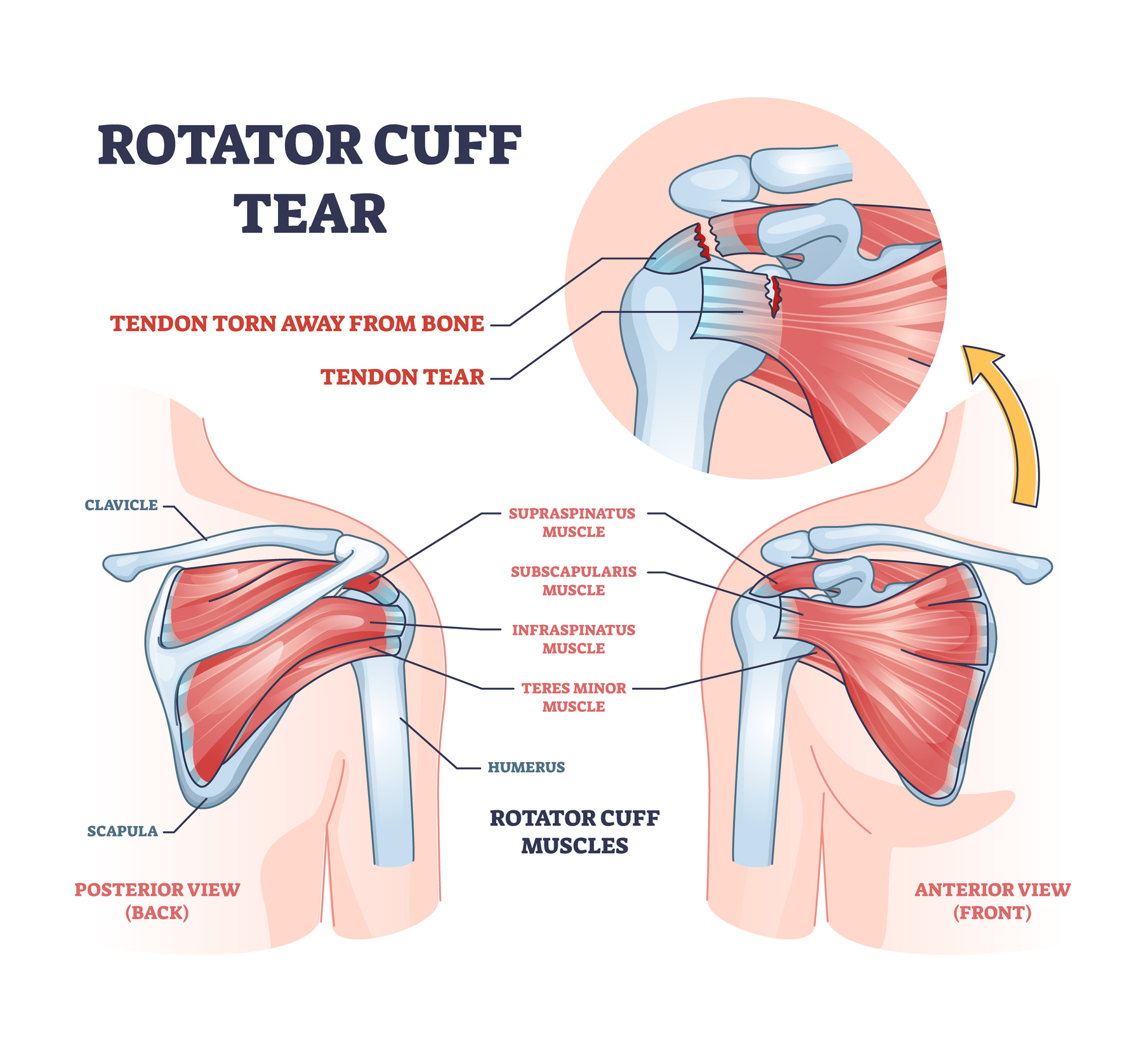Rotator Cuff Injury Experts in Sarasota, FL
Understanding Rotator Cuff Injuries: Causes, Symptoms, and Treatment Options in Sarasota, FL
A Sarasota, FL rotator cuff injury involves damage to the group of muscles and tendons that protect and stabilize the shoulder joint, known as the rotator cuff. The rotator cuff wraps around the humerus bone, connecting it to the scapula or shoulder blade, allowing the arm to lift and rotate.
A rotator cuff tear can significantly weaken the shoulder’s stability, leading to a Sarasota, FL rotator cuff injury—a common condition that sends nearly two million people in the U.S. to their doctor each year. These injuries are often caused by overuse, trauma, age-related degeneration, or shoulder impingement from other shoulder conditions.
With rotator cuff tears, one or more of the tendons may be injured. It’s typical that these injuries begin as fraying and eventually turn into a partial or complete tear (full thickness). If you think of the hairs on the violin’s bow that start to fray and then eventually break and tear, that’s similar to what’s happening in the rotator cuff tendons.
Although trauma is often the cause of rotator cuff tears, degenerative effects of aging are also common causes of injury. Over time, our tendons begin to lose flexibility and are susceptible to repetitive movements that may weaken the tendons.
At Sforzo | Dillingham | Stewart Orthopedics + Sports Medicine, we specialize in minimally invasive techniques for rotator cuff repair. These methods are their first-line treatment if the injury is not too severe or coupled with other complications.
Read on for an overview of the procedure, the shoulder replacement protocol, potential complications, and frequently asked questions about the procedure.

Rotator cuff causes
If you are someone whose job requires constant overhead tension such as painting or electrical work, or if you have an activity that you regularly perform such as fishing, tennis, or pitching, you might have wear and tear that leads to rotator cuff injury.
Degeneration is also hard on the tendons; as we age, we might develop bone spurs in the shoulder bones that can rip the tendons and cause rotator cuff tears. With age, the blood supply in the shoulder often becomes impaired and diminished, therefore causing the rotator cuff to be unable to heal on its own.
What does a rotator cuff injury feel like? Some of the signs of rotator cuff injury are pain, inflammation, limited range of motion, difficulty with sleep, and pain with overhead activities.
When to see a physician
If you develop pain in your shoulder that causes you to have a limited range of motion, impaired motion, or impingement, you should see an orthopedic specialist immediately. Your surgeon will perform numerous rotator cuff injury tests to evaluate how severe is your injury. Most people will try to start conservative treatments at home, such as icing, taking anti-inflammatories, or using kinesiology tape; however, in most cases, you will need to see a specialist for a proper evaluation and diagnosis. If you let it go for too long, your injury will progress and become more severe with time.
Many times, rotator cuff injuries can successfully be treated with physical therapy and other in-office procedures. The key is getting early treatment before your injury progresses into a more complex issue. If you keep it immobilized and do not seek treatment, it may turn into a frozen shoulder.
Choosing Your Orthopedic Surgeon: Board certification and fellowship trained doctors are the elite in the orthopedic industry. Their training, skills, and experience are bar none compared to others; it is an important factor to consider when choosing an orthopedic surgeon.
When you choose Sforzo | Dillingham | Stewart Orthopedics + Sports Medicine, you can rest assured that you will be treated with respect and given the opportunity to ask questions. Your options will be explained in detail, and you will be in the hands of experienced surgeons with the utmost integrity, receiving optimal care.
Rotator cuff injury risk factors
Age— Most rotator cuff injuries occur in people over the age of 40, which is due to degenerative issues that begin to take place and worsen with time.
Family History — Sometimes, these issues can be genetic. Some families have certain orthopedic conditions that run throughout their family. Rotator cuff tears are one of those ailments.
Activities — Many exercise enthusiasts or athletes will develop rotator cuff injuries due to repetitive motions. Individuals that are involved in rowing, pitching, heavy lifting, or other similar activities are at greater risk of injury.
Occupation — If you have a job that requires you to lift objects, use overhead motions or put pressure on your shoulders, you will be more susceptible to rotator cuff injuries. These can include painting ceilings, installing lighting fixtures, construction work, etc.
Rotator cuff injury symptoms
- Dull aching in the shoulder
- Limited range of motion
- Unable to sit, stand or sleep comfortably
- Nearly impossible to reach overhead, such as when trying to shampoo your hair
- Difficulty reaching behind your back
- Pain progresses with time
- Frozen shoulder
When imaging is required
Understanding how to diagnose a rotator cuff injury thoroughly is critical. Orthopedic surgeons will suggest further diagnostic imaging to garner needed details of your specific injury. MRI and MRI arthrograms are very common, as they show incredible detail of the soft tissue and internal structures and intricacies.
Rotator cuff injury prevention and safe exercises
If you are at risk for shoulder injuries, exercising and stretching your shoulder in a well-balanced method is critical to prevent injury.
There are numerous other recommended exercises and stretches to create strength and stability in the entire shoulder region. Some of these the following:
90-Degree Wall Press
Standing on the side of a wall, place your arm at a 90-degree angle at your side with your palm facing inwards. Place a folded-up towel under your arm that’s bent and carefully press the outside of your forearm and elbow against the wall for several seconds. You can repeat this 10 times and then switch the method using the same arm but place the palm of the hand and the inside of the forearm against the wall (towel still under the arm). Hold this for several seconds and repeat 10 times.
Pendulum
Lean over and place one arm down on top of a table or hard surface. Hold your body with your palm on the table and the other arm hanging at your side. For counts of 10, Gently swing your arm back and forth, then side to side, then in small circles. Repeat these 3 to 5 times.
Cross Body Stretch
Standing straight up, gently stretch one arm across your chest, holding your opposite hand on your upper arm, and carefully hold for 30 seconds. Repeat on the other side and alternate for up to 10 times.
External rotation
Standing in a neutral position, hold a lightweight stick or cane, such as a yardstick, in front of your torso. Grasp one end of the stick and cup the other end. Gently pass the stick back and forth from side to side in front of your torso, keeping your elbows in towards your body and the rest of your body still. Hold each push and pull for 20 to 30 seconds. Do not over-stretch to the point of pain.
Internal rotation
Standing in a neutral position, hold a lightweight stick or cane, such as a yardstick, behind you near your lower spine or top of the buttocks. Grasp one end of the stick and cup the other end or hold it where it is most comfortable. Gently pass the stick back and forth from side to side behind you in a horizontal motion. Allow one arm to extend out away from your body and keep the other elbow close to your side. Hold each push and pull for 20 to 30 seconds. Do not over-stretch to the point of pain.
Shoulder Extension (Isometric)
Stand with your back against the wall and arms straight at your sides. Keeping your elbows straight, push your arms back into the wall. Hold for 5 seconds, and then relax. Repeat 5-10 times
Exercises to avoid with rotator cuff injury are numerous; you should only perform the recommended stretches an exercise provided by your doctor. Any other exercises can aggravate and cause your shoulder injury to become worse.
Rotator cuff treatment and how to heal a rotator cuff injury
A sling or rotator cuff wrap are often one of the primary ways to immobilize the shoulder. A sling for rotator cuff injury will provide the most convenient means of immobilization; however, in some cases, a shoulder wrap for rotator cuff injury will be applied by wrapping a bandage around the shoulder and then around the back, across the chest, and then secured to the top of the shoulder.
Increasing blood flow is an essential method for helping the rotator cuff to heal properly. There are advanced regenerative treatments that will enhance blood flow naturally. Surgery may be necessary in some cases to repair the tears and restore healing to the tendons and muscles. Physical therapy is also essential for healing and generating strength and mobility in the shoulder. At home, exercises are also key to preventing further injury and to also intensify rotator cuff healing times.
Doctors may recommend reverse total shoulder replacement as an alternative for extreme rotator cuff tear and wear.
With advanced regenerative medicine procedures, Dr. Sforzo, Dr. Dillingham, Dr. Stewart, and Dr. Meinhardt have helped many patients get back in the game without steroid injections and surgery. These treatments can be used to treat numerous soft tissue and joint conditions. Contact Us for more information.

